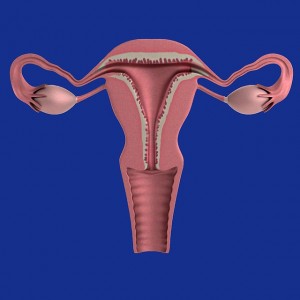How Much Does a Hysterectomy Cost
In simplest terms, hysterectomy is removing the woman’s uterus or womb through an invasive or surgical operation. The internal organ being removed is where an infant develops and grown when a woman gets pregnant.
Usually, the surgeon takes out the whole uterus, depending on the patient’s condition. In some cases, the doctor may include the removal of fallopian tubes and ovaries as well as some parts of the vagina, causing a woman to stop having menstrual periods and prevent her from getting pregnant.
Such risky surgery entails a lot of expenses to cover, but how much does a hysterectomy cost?
The average cost of hysterectomy is $16,000, having a range of hysterectomy price from $10,000 to $22,000 that is already covered by health insurances. Apparently, the cost highly depends on the type of hysterectomy surgery the patient has to undergo. Moreover, there are other factors that may influence the price, which can increase or decrease the total expenses one has to pay.
Three Types of Hysterectomy
Since this involves the organs of the reproductive system, hysterectomy has three types of surgical operations that are based on the varying methods to get the uterus out of the system.
Abdominal Hysterectomy. Also known as an open hysterectomy, this invasive operation is the removal of the uterus by incising the patient’s lower abdomen. Women’s Health says it takes four to six weeks for the woman to recover completely.
How much does a hysterectomy cost if it is done through this procedure? There is no standard abdominal hysterectomy price since it varies on the location and the hospital. But according to Ethicon, the average cost for this method is $11,739.
Meanwhile, Iowa’s Wright Medical Center charge around $15,500, which already includes the $2,250 doctor’s fee.
In Hawaii, on the other hand, there is the Kapiolani Medical Center for Women & Children that has an average cost of hysterectomy between $15,300 to $17,800. However, these are just rough estimations that may still increase more than $23,700 if the surgical procedure involves cancer.
Laparoscopic Hysterectomy. Although this surgical procedure is minimally invasive in removing the patient’s uterus, it still involves a small incision that is done in the navel – the hole in the middle of the stomach. After making a small opening, the surgeon inserts a tiny camera to capture the internal images, allowing the surgeon to conduct the surgery while watching the footage  displayed on the TV monitor.
displayed on the TV monitor.
There are also instances when the surgeon does two to three more tiny incisions in the same body area to insert specialized medical devices to perform the removal process. When this is done, the recovery period can take three to four weeks.
Moreover, the patient is given two options: either she would undergo a supra-cervical hysterectomy where she keeps her cervix untouched or a total laparoscopic hysterectomy that completely removes her uterus.
So, how much does a hysterectomy cost for this operation then? The average cost of hysterectomy of laparoscopic is around $9,426.
Vaginal Hysterectomy. As the name implies, this is an invasive surgical procedure that removes the patient’s uterus through her vagina. During the operation, the doctor has to detach the uterus from the fallopian tubes, ovaries and upper vagina as well as the connective tissues and blood vessels that support the internal organ. Just like the Laparoscopic Hysterectomy, full recovery also takes three to four weeks.
Whether or not it involves the removal of the fallopian tubes and ovaries, the average vaginal hysterectomy price is around $7,627. Saint Elizabeth Regional Medical Center in Nebraska, for instance, charges between $6,800 to $13,400. However, it still does not include the doctor’s fee, which is usually expensive.
*These surgical procedures are all covered by health insurances for as long as the doctor recommends the patient to have the operation, alleviating her current health condition.
Reasons Why a Woman has to Undergo Hysterectomy
Hysterectomy is definitely not a cosmetic surgery. It is given to women who have the following serious health conditions as provided by Women’s Health:
Abnormal Vaginal Bleeding. Characterized by heavy or unusual and prolonged occurrences of blood discharges, this condition is commonly caused by changes in levels of hormones, presence of infection and cancer.
Adenomyosis. This condition happens when the tissue in the uterine lining develops INSIDE the uterine walls where it does not belong. The walls become thicker, causing heavy bleeding and severe abdominal pain.
Cancer or Precancer Affecting Parts of the Reproductive System. Cervical cancer, endometrial cancer (the uterine lining) and ovarian cancer are some of the ailments caused by the existence of cancer cells. Yes, there are chemotherapy and radiation to address those cancer issues. However, undergoing hysterectomy may be more advisable if the patient has cancer in either cervix, ovaries or uterus.
Endometriosis. This is somehow the opposite condition of Adenomyosis. It usually occurs when the tissue, which normally grows along the uterine lining, develops OUTSIDE the womb, particularly in the ovaries where it should not stay and evolve. According to Women’s Health, Endometriosis can cause bleeding between menstrual periods and severe abdominal pain.
Growth of Uterine Fibroids. Apparently, these are benign or non-cancerous growths in the uterine wall. When this happens on women, they experience heavy bleeding and suffer from severe pain in their lower abdomen.
Occurrence of Uterine Prolapse. This typically happens when the womb goes down from its usual position going to the vagina. Women, who had a number of normal birth deliveries (vaginal births), commonly experience Uterine Prolapse, possibly leading to bowel and urinary problems as well as pelvic pressure. But it can occur due to obesity or in cases when a woman has passed her menopausal stage.
Hysterectomy Alternatives
The general hysterectomy price is clearly expensive. It would even be a burden if the patient does not have health insurance that can cover up to 50 percent of the total costs. However, there are alternatives a woman can use before she spends and undergoes the surgical operation. These are:
– Exercises especially for those women who are experiencing uterine prolapse
– Medications prescribed by the doctor to ease the heavy bleeding and severe pain
– Non-surgical Treatments that can shrink or stop the growth of uterine fibroids
– Usage of Vaginal Pessary that is usually placed inside the vagina to keep the uterus in its usual position












